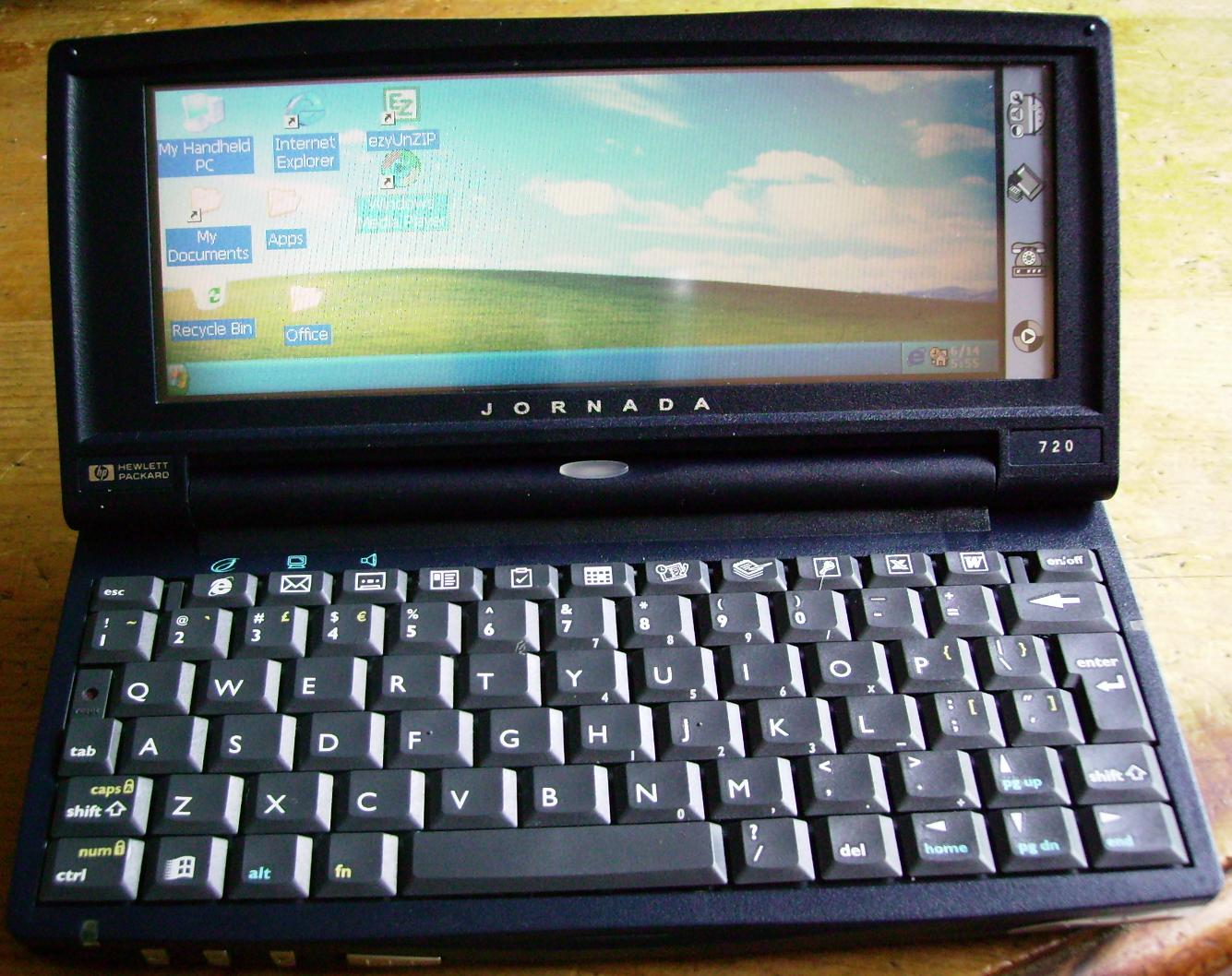Raymii.org

Quis custodiet ipsos custodes?Home | About | All pages | Cluster Status | RSS Feed
My 24 year old HP Jornada can do things your modern iPhone still can't do!
Published: 15-06-2023 01:30 | Author: Remy van Elst | Text only version of this article
Table of Contents
I like to tinker with old hardware. The DEC PDP-8 is my favorite retro computer and Office 2003 is the best version ever released IMHO. One of my other favorite retro devices is the HP Jornada 720. A small handheld PC (smaller than a netbook) running Windows CE or in my case, Linux. It has a decent keyboard, CFL backlit screen, 32 MB of RAM(!), a compact Flash card for storage and a stylus for the resistive touchscreen. Oh and I got a 10Mbit PCMCIA network card, but wireless cards are also still available. It might be old, released in 1999, but can do one thing your modern iPhone can't.
You can develop, compile and run native software on it. It has a C and C++ compiler, Python is available as well as Perl so it is a full fledged development workstation. Not only can you develop software on it, it can run that software as well.
Recently I removed all Google Ads from this site due to their invasive tracking, as well as Google Analytics. Please, if you found this content useful, consider a small donation using any of the options below:
I'm developing an open source monitoring app called Leaf Node Monitoring, for windows, linux & android. Go check it out!
Consider sponsoring me on Github. It means the world to me if you show your appreciation and you'll help pay the server costs.
You can also sponsor me by getting a Digital Ocean VPS. With this referral link you'll get $100 credit for 60 days.
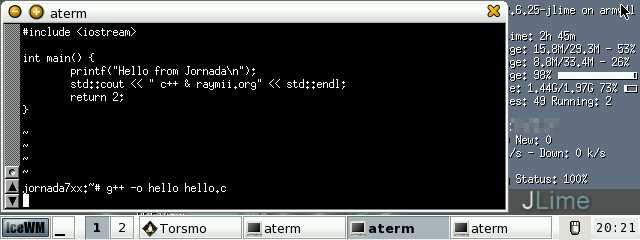
Screenshot of GCC compiling my code
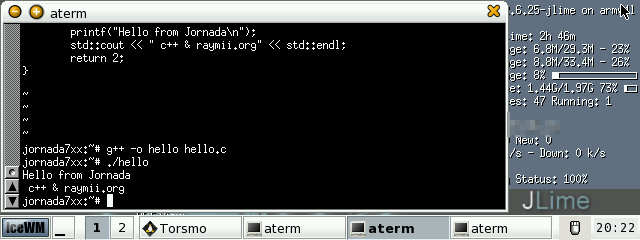
Screenshot of my compiled code running
Here is a review of the device running standard Windows CE and here is an
other review including a comparison to its predecessor, the Jornada 680. NCommander has an excellent video on the 680e and the use of the
device at the Dutch Railways (NS). In the past I also had a NS 680e but the
battery went bad, bricking the entire unit, so I sadly had to throw that away.
The Jornada 720 cost me 80 EUR on the Dutch CraigsList (marktplaats), used,
but boxed including the manual and software CD-ROM.
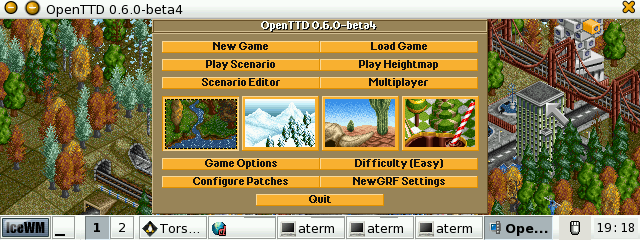
Gaming on the HP Jornada, OpenTTD is my favorite game. Doom is also available.
Bow for me for I am root
I have a rule that I try to adhere to for devices I own. They must allow a means of root or administrative actions. The Nintendo Switch I got second hand is old enough to be jailbroken. The two Apple devices I own (a first gen iPad Air and first-gen iPhone SE) have vulnerabilities that give me root access. All Android phones I owned I've specifically bought because the bootloader can be unlocked. Once I buy a device, it is mine and I decide what to do with it. Not the manufacturer. Otherwise it is e-waste the moment it leaves the factory.
Being able to develop software on a device is almost a must have as well for me. Missing functionality, otherwise known as stuff the manufacturer does not make (enough) money on, can be programmed back in as long as you can develop on a device and are willing to put in enough time and/or money.
Or, using a very much capable computer for things the manufacturer did not think of or were no apps for. Remember the Polish garage that still uses a Commodore 64 for their business?
Modern phones, both Android and iPhone devices, cannot easily program applications on the device itself, they require a second device, namely a computer (Mac or hackingtosh for iPhones even) that can develop and compile software for the device. And in the case of Apple, it is even up to them to allow you to run software on the device. Such a monopoly should be forbidden by law.
Back in the day the Commodore 64 and other home computers booted up into Basic and the only thing you could do was program the device (or start a game). I might be an outlier because my main PC is a Raspberry Pi and my backup Windows laptop is a 2014 Medion model, but with an upgraded SSD and more RAM. The Intel Core i7 in that beast is more than capable, so why replace it?
Linux on the Jornada 720 in 2023
This HP Jornada, a device released in 1999, allows you to develop and run software on it. A third party linux distro is available, JLime, even in 2023 thanks to HPCfactor. JLime was released around 2008.
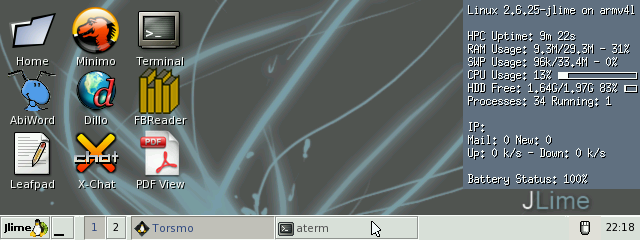
The JLime desktop
Someone else has a modern Debian working on it. With the full size mini keyboard and 5 hours of battery life mine still has (or more if you replace the cells) it's a perfect little pocket-able device.
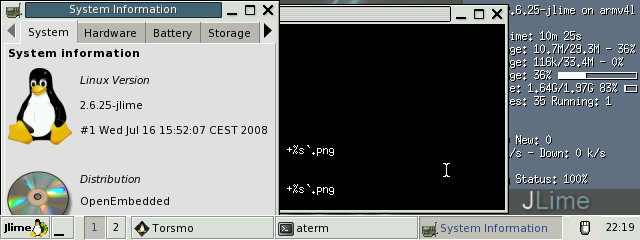
JLime build version info
I've uploaded the working JLime I use to Archive.org. The HPCFactor
version had issues unpacking for me, I think my tar version is too new, it
complained about not finding the next header file.
A bit of fiddling is required in 2023 to get Linux running. The modern Debian/Devuan is way to slow in my opinion (although a marvel of engineering, getting such a modern distro running on an old device).
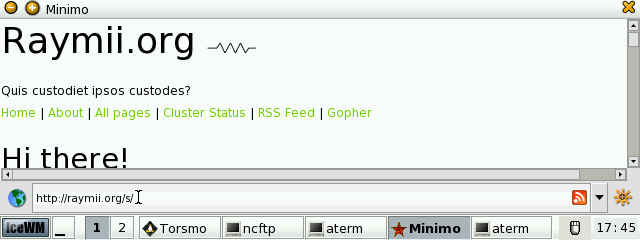
Mini Mozilla browser on JLime
The JLime distro, with a 2.6.25 kernel is much faster. For jotting down notes or Pocket Paint or a game of SimCity, Windows CE is fine. Pocket Word is more than capable as is Abiword or your favorite terminal text editor.
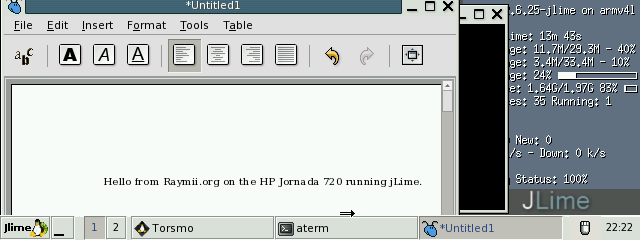
Jotting down some notes in AbiWord
For software development, Linux is a must. To develop for Windows CE you'll need a PC with Visual Studio, the same issue as modern iPhone's have. There are some GCC versions for Pocket PC lingering online but I couldn't get them to work.
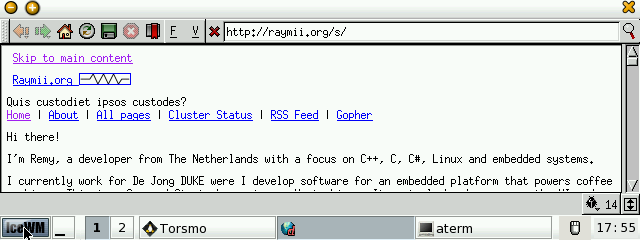
Dillo, a text based browser on JLime
Partitioning your compact flash card isn't that hard, nor is copying some files
to it to run Linux. With the JLime build I'm using GCC is included but the
development headers were not, so I couldn't include <iostream> or
stdio.h.
However, because I have the PCMCIA network card and because HPCfactor still
runs an online repository, installing packages is easy, in my case just an
ipkg install libstdc++-dev away:
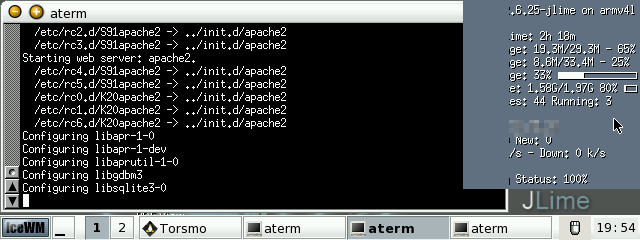
Users should be in control of their devices
So is this realistic? Would I prefer this Jornada over a modern iPhone? Probably not. Would I like an iPhone or iPad that can develop software on it, for itself? Yes absolutely.
Is it a technical issue? Totally no, those new devices are more than capable computers. It's purely a management / money issue. Apple does not get their 30% or 15% cut, so they prefer selling you e-waste in the hope that you buy a new one after a year. And of course that accompanying Mac for app development.
On the Android side this is a bit better. Often bootloaders can be unlocked allowing for things like PostmarketOS being installed when the device reached its manufacturer-decided end of life (no more software updates on otherwise capable hardware).
I have the same Poco F1 as Drew DeVault, also running PostmarketOS. It runs Qt Creator just fine allowing me to program on the device.
You can even run Clion (a C++ ide) on Android, or just about any other Linux distro / application on most Android devices via a bunch of different apps. This allows for most Android to surpass the manufacturers end of life due to them no longer providing software updates.
Boy do I miss the good old days, where devices were programmable by their owners instead of just e-waste consumption slabs.
How many devices do you have lying in a drawer somewhere that are just fine hardware wise, but lack the software updates or development capabilities to be useful today?
Tags: apple , blog , c++ , cpp , debian , development , historical , hp , ipad , iphone , jlime , jornada , mobile , openttd , outlook , pda , pocket-pc , windows-ce , windows-mobile